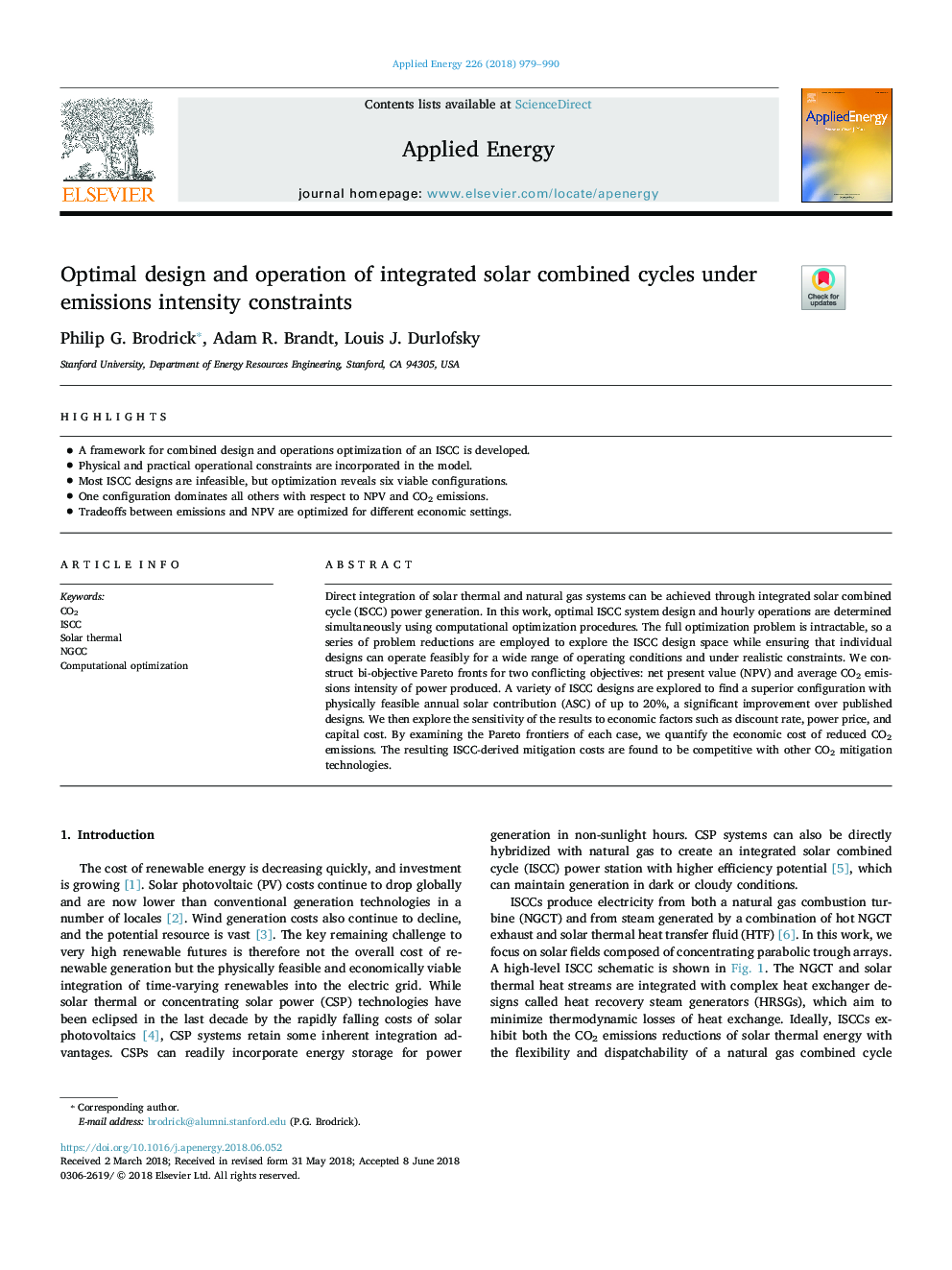| Article ID | Journal | Published Year | Pages | File Type |
|---|---|---|---|---|
| 6679817 | Applied Energy | 2018 | 12 Pages |
Abstract
Direct integration of solar thermal and natural gas systems can be achieved through integrated solar combined cycle (ISCC) power generation. In this work, optimal ISCC system design and hourly operations are determined simultaneously using computational optimization procedures. The full optimization problem is intractable, so a series of problem reductions are employed to explore the ISCC design space while ensuring that individual designs can operate feasibly for a wide range of operating conditions and under realistic constraints. We construct bi-objective Pareto fronts for two conflicting objectives: net present value (NPV) and average CO2 emissions intensity of power produced. A variety of ISCC designs are explored to find a superior configuration with physically feasible annual solar contribution (ASC) of up to 20%, a significant improvement over published designs. We then explore the sensitivity of the results to economic factors such as discount rate, power price, and capital cost. By examining the Pareto frontiers of each case, we quantify the economic cost of reduced CO2 emissions. The resulting ISCC-derived mitigation costs are found to be competitive with other CO2 mitigation technologies.
Related Topics
Physical Sciences and Engineering
Energy
Energy Engineering and Power Technology
Authors
Philip G. Brodrick, Adam R. Brandt, Louis J. Durlofsky,
